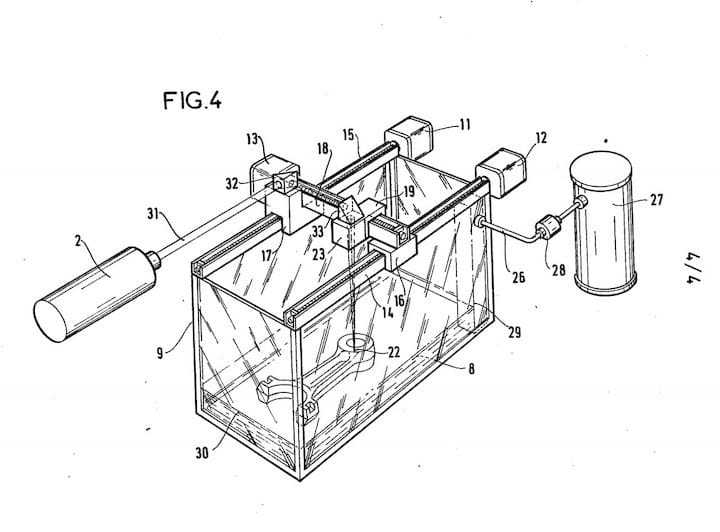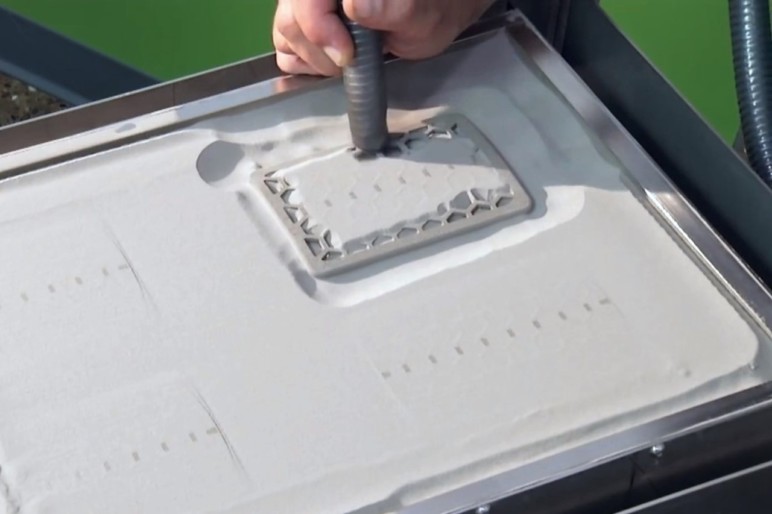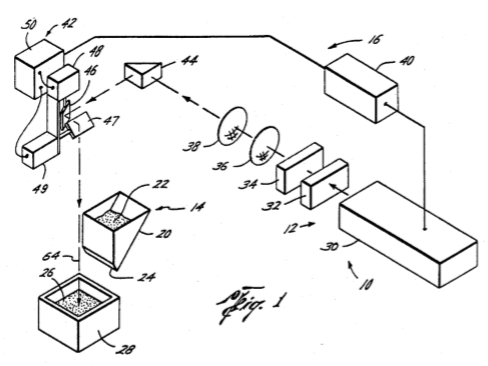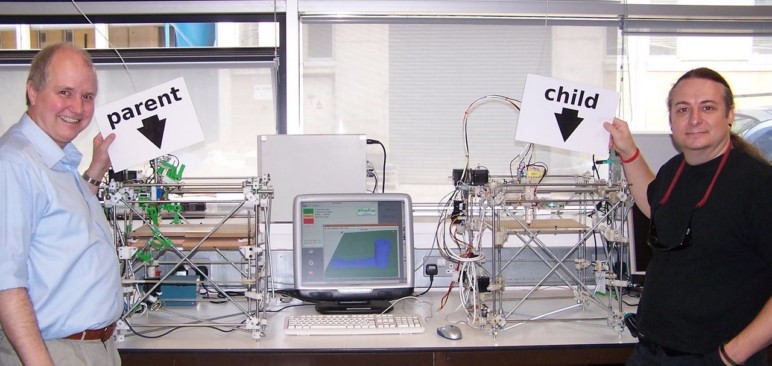History of 3D Printing – Who Invented the 3D Printer?
We remember Gutenberg as the inventor of movable type and Edison as the inventor of the light bulb. Each made critical advancements, but each had important predecessors as well. And so it was with 3D printing.
WHO INVENTED THE 3D PRINTER?

Charles “Chuck” Hull deservedly takes the honor of inventing 3D printing. He devised the first successful stereolithography machine and was awarded a US patent for his invention.
BC (Before Chuck)
Interestingly, some years before Hull’s invention, Doctor Hideo Kodama of Nagoya Municipal Industrial Research Institute published an article detailing how “a solid model is fabricated by exposing liquid photo-hardening polymer to ultraviolet rays, … stacking the cross-sectional solidified layers.” Sounds like a 3D printer! Kodama even made some parts but never got around to completing his patent specification.
A French team composed of Jean-Claude André, Olivier de Witte, and Alain le Méhauté came next. They too made objects and pursued a patent, but it was later abandoned for an apparent lack of commercial prospects. Oops!
The Dawn of SLA
So the honors and the commercial success go to Hull, who in the early 1980s, hit upon the idea of using concentrated UV light and UV curable plastic to produce three-dimensional parts from computer files.
Working late into the night, he built his first 3D object with a process he called stereolithography. In the excitement of the moment, he called his wife, forcing her to get dressed and come over to his lab. Her reaction: “This had better be good!” It was.
Hull’s concentrated spot of UV light followed a computer-controlled pattern. The liquid struck by the pattern of light solidified and attached to what had come before. Once a layer was complete, the part would drop down just below the surface in a bath of liquid plastic. This kept each printed layer the same distance from the light source. Over and over a new thin layer of liquid was selectively cured and attached.
Using this patented technology, Hull built the company 3D Systems. At that time, the technology remained stereolithography. The name “3D printer” came later…
WHO INVENTED THE 3D PRINTER?
Printing with Powder

By name, the first “three-dimensional printer” came from a team out of MIT. It included Emanuel M. Sachs, John S. Haggerty, Michael J. Cima, and Paul A. Williams, who’re responsible for binder jet printing.
Binder jetting uses inket printing to selectively apply an adhesive agent (binder) to successive thin layers of powder. It opened the door to 3D printing with all kinds of materials, from sand (for casting molds) to ceramic, metal, and plastic.
Binder jetting may not be the first 3D printing technology that comes to mind, but it is very much in use today, for example by ExOne and in HP’s Metal Jet. Binder jetting is also like a parent to one of today’s cutting-edge technologies: HP’s Multi Jet Fusion.
WHO INVENTED THE 3D PRINTER?
A Frog’s Leap to FDM

S. Scott Crump invented the machine that most 3D printing hobbyists would recognize today. He hit on the idea for fused deposition modeling (FDM), which he tried out by making a toy frog for his daughter with a hot glue gun.
Enhanced by computer control, Crump’s filament-based extrusion concept begat printers from Stratsys (the company started by Crump) as well as later incarnations from Prusa, Lulzbot, MakerBot and Ultimaker, to name a few.
Crump also invented breakaway and soluble supports, which allow FDM to create undercuts and hollow designs.
WHO INVENTED THE 3D PRINTER?
Laser Focus on Additive Manufacturing

As an undergraduate at the University of Texas, Carl Deckard came up with the idea of using a laser beam to sinter tiny volumes of powder, layer by layer, to create a solid part.
Selective laser sintering (SLS) has the ability to create hollow parts without support since the unfused powder bed supports any newly fused layers. This is a feature SLS shares with its powder-based cousin binder jetting.
A powerful laser does the precision heating for the sintering process, which heats the plastic powder just short of melting. It’s because of this high power laser that SLS is not yet a hobbyist technology.
WHO INVENTED THE 3D PRINTER?
Rep-Rapping It Up

Dr. Adrian Bowyer can take credit for creating the concept of the open-source 3D printer that can print (most of) its own components. The RepRap project (short for replicating rapid prototyper) was a major drive in the 3D printing community, eventually leading to state-of-the-art machines like the Prusa MK3 or the Lulzbot Mini 2. Both use many printed parts, and their manufacturers make the STL files available for download.
